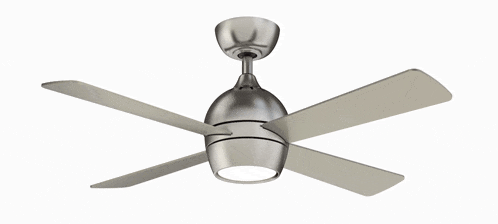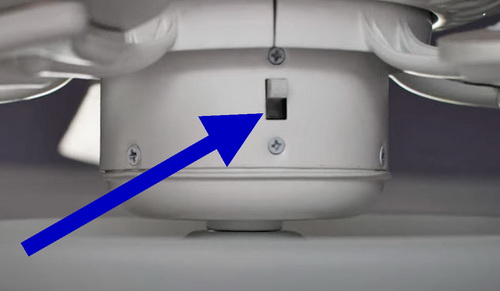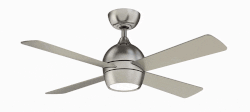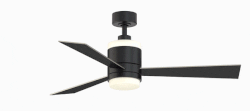One of the most important considerations when running a ceiling fan is the direction in which it should rotate. During the summer months, ceiling fans should be set to turn counterclockwise. A high-speed setting is ideal for cooling off quickly during sticky summer days while a low setting is better used as more of a background.
 What Direction For Ceiling Fan in Summer?
What Direction For Ceiling Fan in Summer?
How To Change the Direction Of A Ceiling Fan?
Changing the direction of your ceiling fan is easy to do. Most fans have a small switch on their motor housing, near the base, where you can select the desired fan blades rotate speed settings and direction. Common directions include “forward” and “reverse” and can be used depending on the temperature settings in your home. The setting on the fan might also say clockwise or counterclockwise.
 Ceiling Fan Direction Switch
Ceiling Fan Direction Switch
Which Way Should the Ceiling Fan Go in Summer?
In the summer, you should set your ceiling fan to spin counterclockwise. This creates a downdraft, which pushes cool air down into the room. As the cool air circulates, it creates a wind-chill effect, making your home feel cooler and more comfortable. The speed of the fan also plays a role in how effectively it cools the room. A higher speed creates a stronger wind-chill effect, making the room feel cooler. If you are standing under the fan it has a better cooling feeling. It’s important to only use the fan when you’re in the room. Leaving the fan on when you’re not in the room wastes energy and doesn’t cool the room.
 Ceiling Fan in Summer = Spins Counterclockwise
Ceiling Fan in Summer = Spins Counterclockwise
Which Way Should the Ceiling Fan Go in Winter?
In the winter, you should set your ceiling fan to spin clockwise. This creates an updraft, which pulls cool air up and forces warm air down along the walls. This creates a more even temperature throughout the room, making it feel warmer and more comfortable. The fan should be set to a low speed in the winter. This prevents the cool air from creating a draft and makes the room feel colder.
 Ceiling Fan in Winter = Spins Clockwise
Ceiling Fan in Winter = Spins Clockwise
Clockwise vs. Counterclockwise – Summer And Winter
Ceiling fans can spin in two directions – clockwise and counterclockwise. The direction of the fan is determined by the direction in which the blades are angled. Clockwise rotation means the blades are angled to push air down, while counterclockwise rotation means the blades are angled to pull air up.
About Ceiling Fan Direction
There are a few common misconceptions about ceiling fan direction that is worth addressing. The first is that running the fan all the time will cool your home faster. This is not true. Ceiling fans don’t cool the room – they simply create a wind-chill effect that makes the room feel cooler. Running the fan when you’re not in the room wastes energy and doesn’t cool the room any faster.
Another common misconception is that ceiling fans should only be used in the summer. While they are great for keeping your home cool in the summer, they can also be used in the winter to keep your home warm and comfortable. Just remember to set the fan to spin clockwise and at a low speed.
Ceiling fans are a great way to keep your home cool and comfortable in the summer while saving energy and money. By setting your fan to spin counterclockwise in the summer and clockwise in the winter, you can optimize its effectiveness and create a more comfortable living space. Stay cool this summer and warm this winter with the right ceiling fan direction.



Leave a Reply